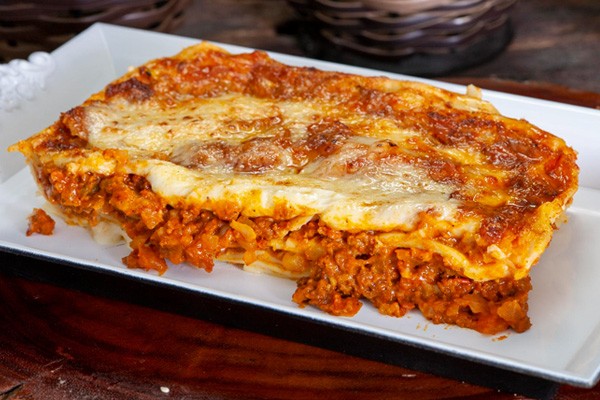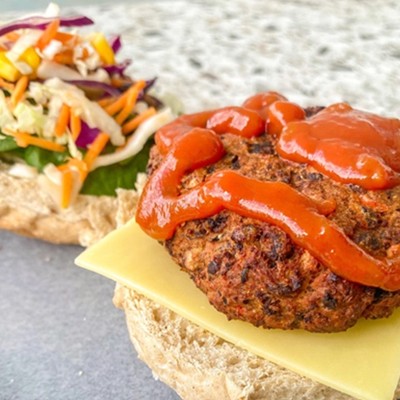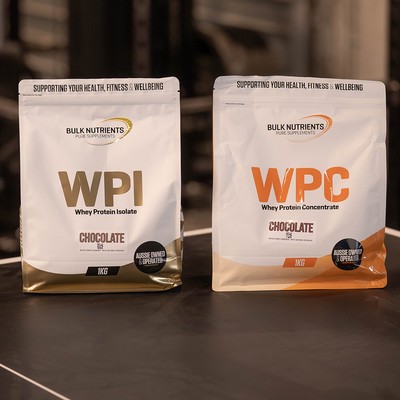How Modern-Day Commercial Meals Impact the Amount We Eat

The super sized effect
Research has consistently demonstrated that people eat more calories in a meal when presented with a larger versus a smaller portion size, even when multiple portions (or seconds and thirds) are offered by researchers.
It is clear that the growth in portion sizes served in a given eating occasion is a probable contributor to the obesity epidemic, and the general population’s struggle to maintain a healthy body weight or achieve their desired body composition.
What’s even more interesting, is that there is some research to suggest the changes in commercial portion sizes in our eating environment have the potential to cause downstream consequences beyond that single eating occasion, to future self-served portion sizes. It’s possible that exposure to larger portion sizes may be causing society to recalibrate their perceptions of portion sizes, making larger portions more normalised.
In a new study, researchers examined whether being served smaller versus larger portions of lasagne would affect self-served portion size consumption of a meal on the following day. The researchers predicted that the general perception of what constitutes a normal sized portion may be recalibrated the following day and affect the amount of food one might serve themselves.

So, what did they find?
The results showed that when people are served a smaller (versus a larger) portion of lasagne, they actually served themselves a smaller amount of food the following day, and overall ate less compared to when provided a larger serve of lasagne.
Following qualitative analysis of this finding, the researchers found that the portion size exposure and later consumption was related to changes in perceptions of descriptive and injunctive social normal norms. Meaning, beliefs about what others do, and beliefs about what should be done according to others. These results are consistent with other research in the area, showing that consuming smaller portions of foods decrease the amount of food that participants later freely serve themselves and consume.

How can we practically apply this info?
Well, from a sociological perspective, it certainly makes a lot of sense that downsizing commercially available food products could have follow on effects that reduce a person’s future portion size preference and consumption, potentially providing a remedy to the obesity struggle. But, with that said, given the preference for larger portions among many individuals, it seems unlikely that vendors will begin downsizing at risk of losing market share.
So, what other alternatives are we left with?
It seems realistic to make the recommendation to limit consumption of commercially produced or restaurant prepared meals, especially in a weight loss phase, and especially among those who struggle with maintaining healthy or desired body weight.
The effect of portion size serving on subsequent self-served calories is extremely rapid. Meaning it might only take one large serve of lasagne at your favourite Italian restaurant to impact the amount of food you consume in the following day.
Additionally, having one of these meals, even on a weekly basis (think the common weekly refeed meal during contest prep) may make returning back to your normal “prep” meals seem more difficult, or perhaps visually less appealing or less satisfying compared to keeping consistent portion sizing throughout this phase.
We might then ask ourselves, with the rise in Instagram and the flurry of IG food grams and food porn pages, how might they impact our perception of portion sizes, and therefore the amount we serve ourselves? Interestingly, the researchers also addressed this in the study. Surprisingly to me, visual exposure to larger portion sizes in images (compared to smaller ones) did not impact the amount people ate the following day. So, at this stage….it looks like you can feel free to engage in some food porn…in moderation and in the privacy of your own home of course.

Jackson Peos has completed a PhD at the University of Western Australia, and has a straightforward approach to nutrition and supplements.
He's completed his BSc in Sports Science, and Exercise & Health, and his BSc (Hons) in Exercise Physiology.
More about Jackson PeosReferences:
- Raghoebar S, Haynes A, Robinson E, Van Kleef E, De Vet E. Served Portion Sizes Affect Later Food Intake Through Social Consumption Norms. Nutrients. 2019; 11(12):2845. https://doi.org/10.3390/nu11122845






























